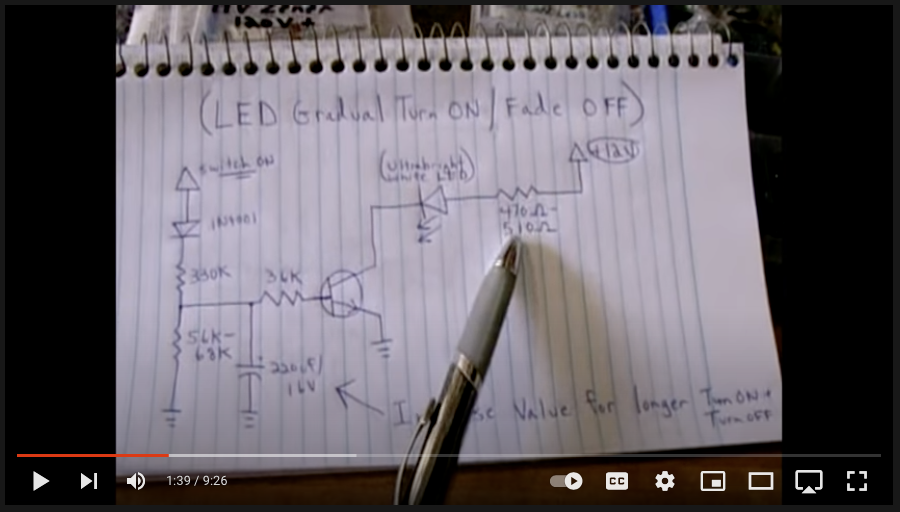This is something I want to make for an aquarium, but I'm a novice with electronics. Here are my constraints:
* 4.92 A
* 59 W
* 12 V
I found a YouTube video with instructions online, unfortunately the creator's suggested max amperage is too low.
_screenshot_

Does anyone know how I can update this circuit for my needs? Any help is much appreciated!
- When power is applied I want LEDs to slowly power up (15-30 minutes) and when power cut to slowly power down (15-30 minutes). Very gradual.
- Don't want to use a battery, want to use capacitors
- Want to keep capacitance at "safe to handle" levels. If it becomes a serious shock risk, then I can compromise on power up/down time. 10 minutes at least I'd say but prefer longer.
* 4.92 A
* 59 W
* 12 V
I found a YouTube video with instructions online, unfortunately the creator's suggested max amperage is too low.
_screenshot_

Does anyone know how I can update this circuit for my needs? Any help is much appreciated!
